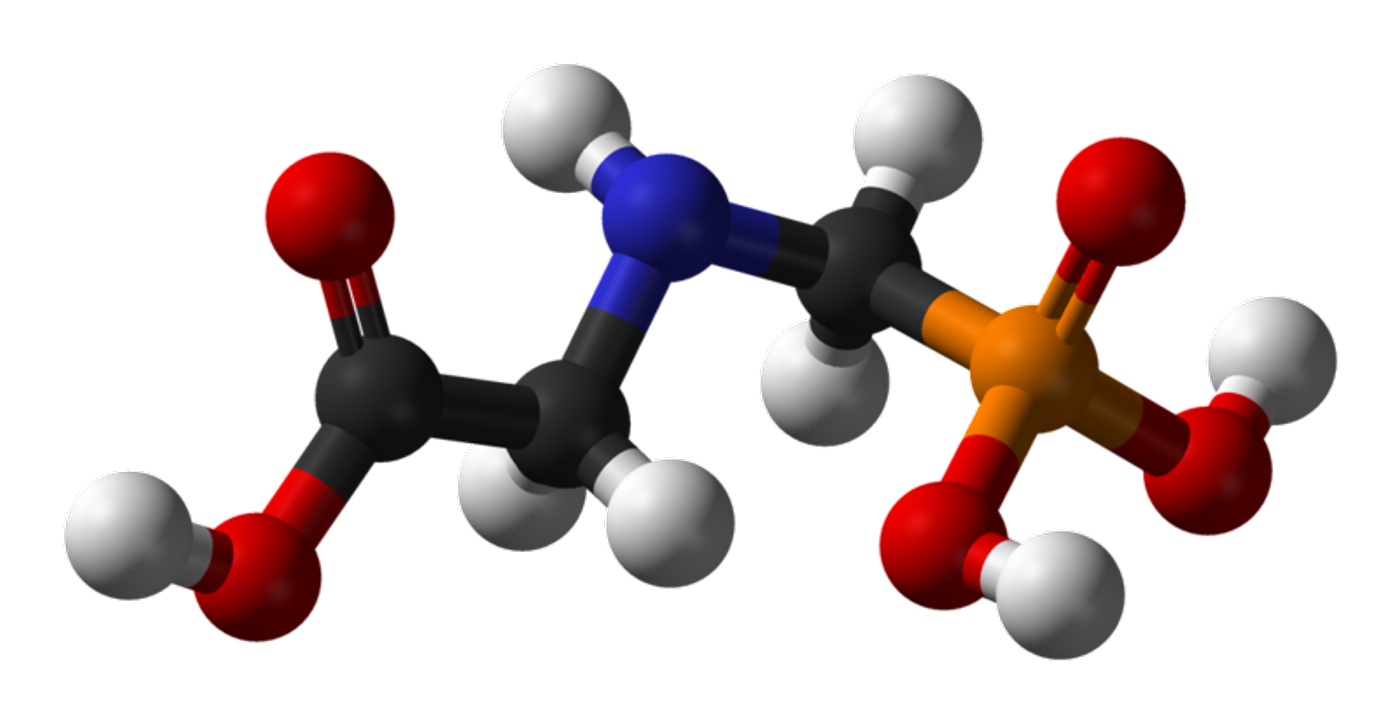Glyphosate Exposure Causes Liver Disease in Rats
Glyphosate-based herbicides are non-selective chemicals used worldwide as weed killers and pesticides on genetically modified crops. The glyphosate molecule is a derivative of glycine, the smallest amino acid found in proteins, where one of the amino hydrogen atoms of glycine is replaced with a phosphonomethyl group. This change in structure allows glyphosate to be absorbed by plants and block the activity of specific enzymes. The enzyme enolpyruvylshikimate-3-phosphate synthase (EPSPS) helps convert carbohydrate precursors into amino acids and other plant metabolites. By blocking the continuation of this conversion pathway, glyphosate causes a metabolite deficiency that starves the plant.
Glyphosate chemicals, such as in Roundup, have been found to accumulate in food and drinking water. As a chelating agent, it binds to metal ions and can then be absorbed. Epidemiological data about accumulation of the chemical in humans is limited, however, evidence suggests that it is widespread. Prior research into glyphosate toxicity shows negative effects on metabolism, specifically liver and kidney function.
Glyphosate affects metabolism by acting as a protonophore, which increases membrane permeability to protons and calcium in mitochondria. This elevation in proton levels can lead to oxidative stress. Clinical biochemistry analysis also shows resulting histological changes in the liver. However, most of these tests were performed with glyphosate intake levels far greater than regulations allow for human consumption.
A group of researchers from King’s College London realized advances in molecular profiling techniques through proteome and metabolome analysis could shed new light on their previous 2-year study into expression analysis of livers from rats given low doses of glyphosate in drinking water. Their prior results showed morphological liver and kidney damage and biochemical decrease in function of the organs following glyphosate exposure over 2 years.
Introducing new techniques for analysis hypothetically should provide a further examination of functional issues in the liver and kidneys of the animals. Proteome analysis demonstrated that altered protein levels were indicative of oxidative stress and changes in fatty acid metabolism. An exhaustive metabolome investigation also revealed initiation of oxidative stress in addition to hepatotoxicity characteristics. The study was published in Nature Scientific Reports.
"Metabolomics and proteomics allows detection of hundreds or even thousands of molecules at the same time, which is much greater than other techniques. So we could clearly see what is happening in the organs," said Robin Mesnage , a research associate at King's College London, Department of Medical and Molecular Genetics.
These findings of altered function in the liver are consistent with symptoms of non-alcoholic fatty liver disease (NAFLD). The researchers concluded that based on these results, chronic exposure to even low doses of glyphosate in mammals can lead to metabolic dysfunction. Next steps would be to perform endocrinology testing on the samples to investigate the possible implications of glyphosate exposure in the initial development of metabolic syndrome in the liver.
In the video below, Dr. Kurt Straif from the WHO discusses use of glyphosate and potential risk aversion on EuroNews.
Sources: Nature, Glyphosate, Aljazeera









